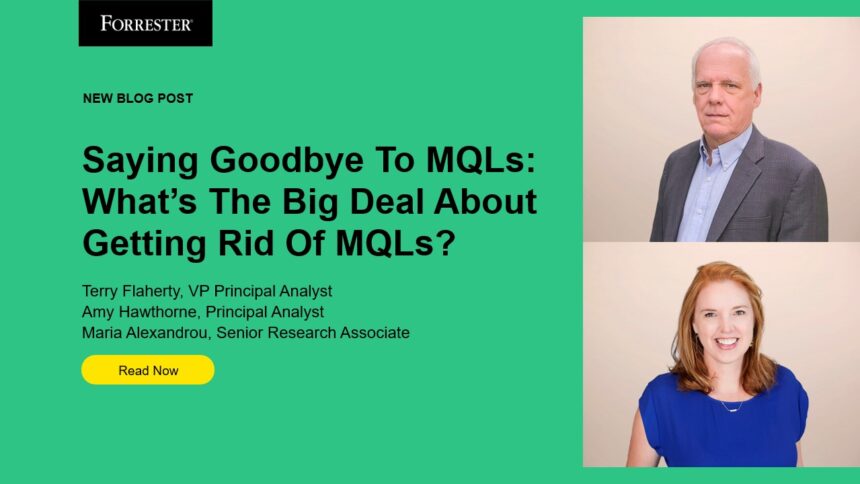Saying goodbye to MQLs (marketing-qualified leads) and hello to opportunities has practically become a mantra at Forrester, one that undoubtedly turns heads and raises eyebrows.
Making the shift from MQLs to buying groups and opportunities continues to be a hot topic that boils up many questions — that’s what we’re here for! To support your organization’s transformation, Forrester is publishing the Saying Goodbye to MQLs multipart blog series. In this series, Amy Hawthorne, Maria Alexandrou, and I will give you the answers to the most asked questions during a transition like this.
This series will cover a range of topics from understanding the need for transformation to operational strategies, changes in measurement needed, how to sell this transition internally, and more.
Between guidance sessions and our recent webinar, Say Goodbye To MQLs, No Thanks To MQAs, And Hello To Opportunities, we have plenty of questions to start with. But if you have your own burning questions, just send them here and we’ll be sure to answer in future blogs.
Without further ado, let’s get started on the first question …
Why should we transition from MQLs to buying groups?
Understanding the answer here will be the foundation of your organization’s journey to buying groups and opportunities.
The individuals identified as MQLs are not buying alone. The B2B purchase process is complex and goes beyond a single person (aka lead) deciding to buy a product or service for their entire organization. Imagine the pressure on that person if that really was the case!
Organizations have already been marketing to multiple personas for years. And sales will always tell you that they often identify additional contacts to close a deal, because engaging with a buying group is a huge indicator of propensity to buy. Marketing and sales teams need to stop working in silos and align under the buying group mentality.
Focusing on MQLs provides a very limited view of the group tasked with identifying solutions to solve a business pain. Passing leads or MQLs single file leaves context about the buying decision behind.
And our research shows that B2B buying decisions are made in groups, representing multiple departments, roles, and personas. According to data from Forrester’s Buyers’ Journey Survey, 2022, more than 50% of B2B buyers participated in consensus buying scenarios (generally a medium-sized purchase including three to five people) or committee buying scenarios (a large purchase involving several departments and executive leadership). With more than 50% of B2B buyers buying in either consensus or committee scenarios, it’s no surprise that 28% of B2B buyers participated in a buying group consisting of four to nine people and another 46% participated in a group of two to three people to make their purchasing decision. Yet many organizations still have a revenue process that focuses exclusively on a single lead, signal, or MQL.
It’s time to meet the buyers where they are and stop forcing them into conflicting internal processes just because “it’s always been done that way.”
If you agree and want to learn more about making this shift, tune in to the Saying Goodbye to MQLs blog series every Thursday. Check back here next week, and we’ll dive into what buying groups mean for individuals.








